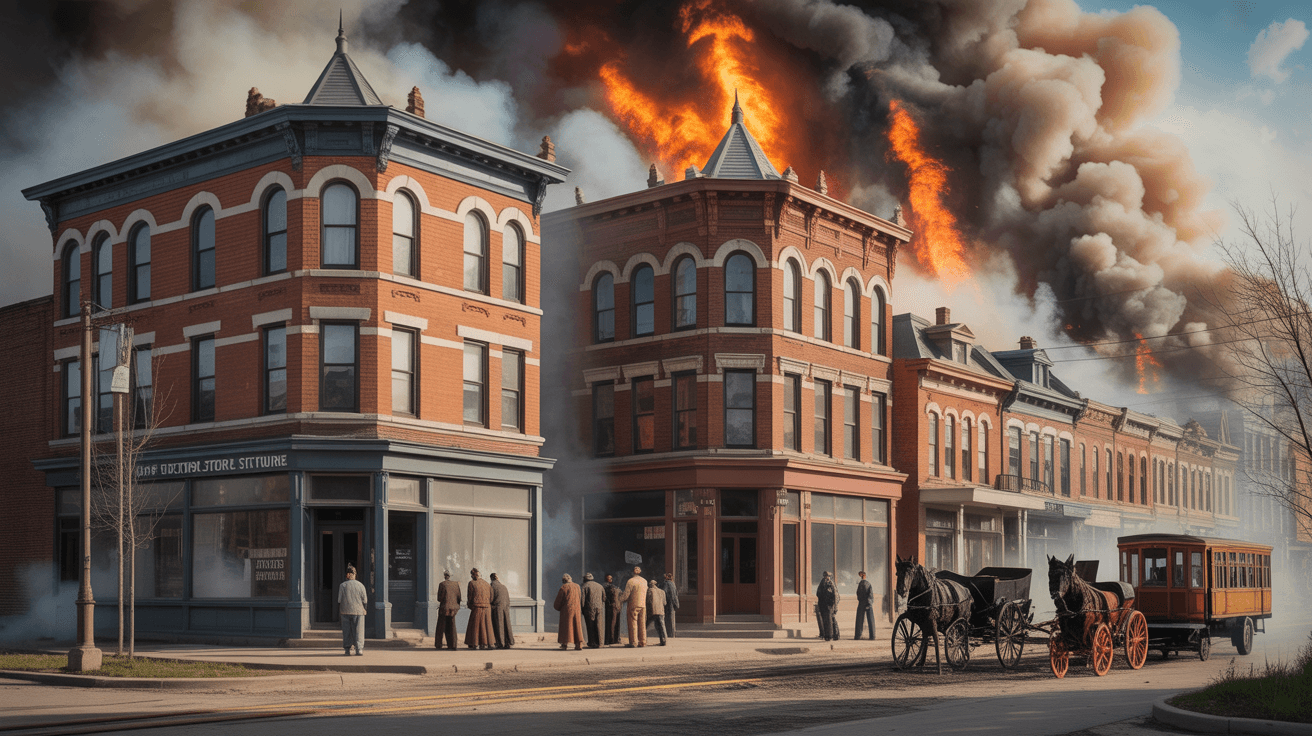Edmonton Scoop
Archives
The Untold History of Old Strathcona Edmonton & Its Brick Legacy
SIGN UP FOR OUR NEWSLETTER
The Tale of Two Bricks: How a Fire, a Furniture Giant, and a Fight for History Forged Old Strathcona |
While a furniture empire named ‘The Brick’ was born in downtown Edmonton in 1971, a different kind of brick story was cementing the legacy of Old Strathcona. This is the untold history of the neighbourhood’s very soul. |
There is a story many Edmontonians think they know about a famous warehouse in Old Strathcona.
It’s a story about a burgeoning furniture giant, The Brick, and its supposed origins among the historic facades of Whyte Avenue.
But that story isn’t true.
The first The Brick Warehouse opened its doors on September 1, 1971, not in Old Strathcona, but in the heart of downtown Edmonton.
The real story of ‘brick’ in Old Strathcona is far more profound, written not by a single company, but by a community fighting to save its very identity.
It’s a tale etched into the mortar of every building, a narrative that begins with the threat of fire and the dawn of a fierce rivalry.
A City Forged in Fire and Ambition
Before it was a bohemian paradise of festivals and boutiques, Strathcona was its own city, a proud and ambitious rival to Edmonton across the North Saskatchewan River.
Its early commercial core along Whyte Avenue was a familiar prairie scene of simple, wooden pioneer stores, vulnerable and impermanent.
That all changed in 1902.
Fearing the devastation of fire that had leveled other prairie towns, the Town of Strathcona passed a transformative bylaw.
It mandated that all new buildings in the downtown core be constructed of brick.
This single decision is the reason Old Strathcona looks the way it does today.
It wasn't about aesthetics; it was about survival and a declaration of permanence.
From this edict rose architectural treasures like the Gainers Block and the Douglas Block, creating a streetscape of remarkable character and resilience that stood in stark contrast to the wooden structures north of the river.
The Fading Glory and a New Beginning
When Strathcona amalgamated with Edmonton in 1912, its prominence faded.
The economic slowdown that followed ironically became its saving grace, preserving the pre-war brick architecture from the wrecking balls of mid-century progress.
By the late 1960s, however, the area was seen by some as tired and ripe for demolition.
Plans were even drawn for a freeway that would have cut right through the heart of the community and over the Mill Creek Ravine.
But as one business was being born downtown in 1971, a movement was stirring on the south side.
That same year, a community-led project began that would rebrand the area as “Old Strathcona” and establish the Old Strathcona Foundation, a powerful new force for conservation.
This was the moment the neighbourhood fought back, recognizing its brick-and-mortar history not as a liability, but as its greatest asset.
Old Strathcona Today: A Living Museum
Today, that fight has paid off in ways few could have imagined.
Old Strathcona is a designated Provincial Historic Area, a hub of arts, culture, and entertainment unlike any other in Western Canada.
It's home to the legendary Old Strathcona Farmers' Market, the celebrated Edmonton International Fringe Festival, and a vibrant theatre district pulsing with creative energy.
The area continues to evolve, with the city’s Old Strathcona Public Realm Strategy aiming to enhance walkability and create more pedestrian-friendly spaces.
New developments like The Hat at Old Strathcona are bringing hundreds of new residents, injecting fresh life while navigating the delicate balance of heritage preservation.
The very tension between preserving history and embracing the future defines the neighbourhood’s modern character.
The original brick buildings now house trendy boutiques, one-of-a-kind restaurants, and cozy cafes, their century-old walls echoing with new stories.
So while the story of The Brick furniture store is a significant part of Edmonton’s entrepreneurial history, its heart lies downtown.
The true story of brick in Old Strathcona is the story of the community itself, a testament to foresight, resilience, and the enduring power of place.
Our reader's frequently Asked Questions
What is Old Strathcona known for?
Old Strathcona is famous for its historic buildings, vibrant arts scene, and lively entertainment district centered on Whyte Avenue. It hosts numerous festivals, including the Edmonton International Fringe Festival, and is home to the year-round Old Strathcona Farmers' Market, independent theatres, unique shops, and a dense concentration of restaurants and bars.
Why are the buildings in Old Strathcona made of brick?
In 1902, when Strathcona was its own town, a bylaw was passed requiring new buildings in the commercial core to be constructed of brick. This was a fire prevention measure common in prairie towns at the time and is the primary reason for the area's distinct architectural character.
Is Old Strathcona a heritage site?
Yes, in 2007, a five-block area of Old Strathcona was designated as Alberta's second Provincial Historic Area. This designation helps protect its significant collection of pre-World War I commercial architecture and preserves the historical integrity of the neighbourhood. |


